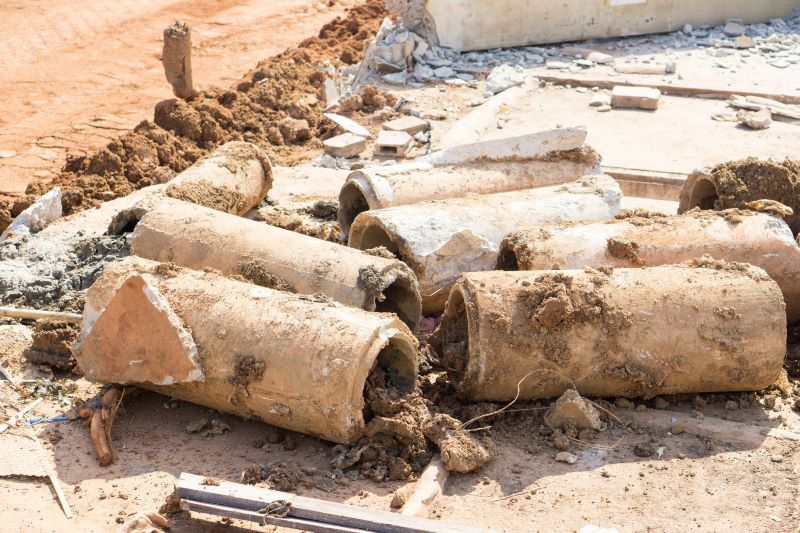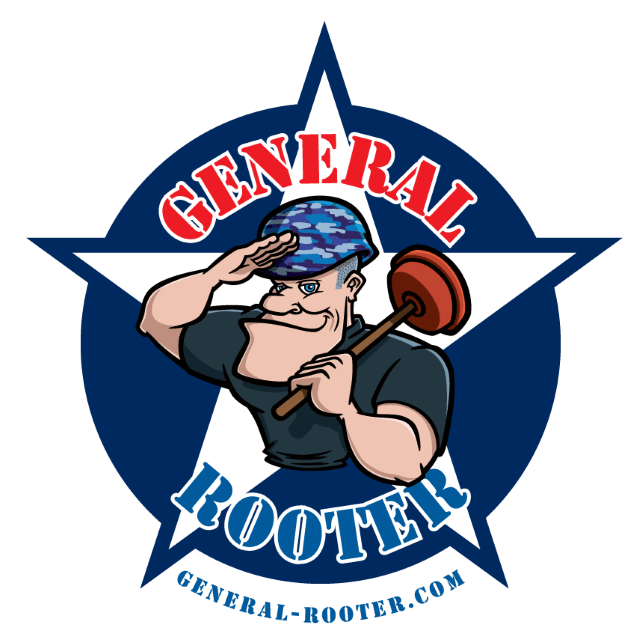Pipe Bursting to Replace Damaged Sewer and Water Lines.
 Traditional method of excavating pipes
Traditional method of excavating pipesUnder the traditional dig-and-replace method of sewer and water line rehabilitation, a replacement or additional parallel sewer line is constructed by excavating along the entire length of the existing pipeline, removing the existing pipe, and replacing it with a new pipe.
In contrast, alternative trenchless methods exist to repair or replace aging and damaged infrastructure, including sewer pipes and water lines, without significant excavation. Pipe Bursting, also called in-line expansion, is one such method.
The pipe bursting process involves a cable and winch pulling a new pipe through an existing damaged pipe, which is being shattered by a bursting head. The head pushes the pipe apart to create room for the new pipe, and the surrounding soil is also pushed away. The replacement pipe may be of the same or larger diameter to increase capacity.
Advantages of using Pipe Bursting
- Minimal Surface Disruption: Unlike traditional excavation, pipe bursting requires minimal digging, reducing surface disruption and restoration costs.
- Efficiency: The process is generally faster than traditional methods, leading to shorter project timelines.
- Cost-Effective: Lower labor and restoration costs make it a more economical option.
- Environmental Impact: Less excavation means reduced environmental impact and less disturbance to surrounding areas.
- Versatility: Can be used in various soil conditions and for different types of pipes.
Is Pipe Busting Right for Me?
Pipe bursting can be used on various types of pipe materials, making it a versatile method for replacing pipes. Here are some common types of pipes suitable for pipe bursting:
- Clay Pipes: Often used in older sewer systems.
- Cast Iron Pipes: Common in older water and sewer systems.
- Concrete Pipes: Including both plain and reinforced concrete.
- Asbestos Cement Pipes: Found in older water and sewer systems.
- PVC (Polyvinyl Chloride) Pipes: Common in modern installations.
- ABS (Acrylonitrile Butadiene Styrene) Pipes: Used in various applications.
- Steel Pipes: Often used in gas and water lines.
- Polyethylene Pipes: Common in modern water and gas systems.
Pipe bursting, while effective, does have some limitations:
- Pipe Condition: Severely collapsed or heavily deformed pipes may not be suitable for bursting, as the equipment might be unable to navigate through the damaged sections.
- Proximity to Other Utilities: The process can damage nearby underground utilities in congested areas.
- Soil Conditions: Expansive or loose soils can complicate the process and reduce effectiveness.
- Pipe Length: Pipe bursting is generally more effective for pipes longer than 15 feet and typically under 750 feet.
- Pipe Alignment: Significant alignment issues or sags in the existing pipe can pose challenges and may not be corrected by bursting.
- Ground Displacement: The process creates outward ground displacements, which can affect nearby structures or surfaces.
- Environment: Pipe bursting does not require added chemicals or other contaminants.
Start with a Video Camera Inspection
We will first perform a camera inspection to see if pipe bursting is necessary and if there is another method that would be more efficient and cost-effective. You and our technician will be able to observe the entire length of the pipe. Problems including corrosion, cracks, offset pipe joints, tree root invasion, or collapsed sections need to be evaluated to determine if pipe bursting is possible or even necessary. We may even find that what you need is cast iron pipe descaling.
Call General Rooter
Would you like to explore pipe bursting or alternative methods for pipe replacement or do you have any other questions about trenchless technologies? Call General Rooter 507-550-2564.
General Rooter offers several methods for replacing or repairing damaged sewer pipes. The method used depends on your particular circumstances.
We offer the traditional dig-and-replace method, in which we excavate a trench along the entire length of the existing pipeline. But when appropriate, we may recommend trenchless methods that do not require digging up your yard, driveway, garage floor, or more and require less restoration than the traditional dig-and-replace method.
One trenchless technique we commonly use is pipelining, where the sewer pipe is relined with our Cured In Place Piping (CIPP) from your home to the city sewer main without excavation. Another is pipe splitting, where the pipe is cut open as a cutting head is pulled through the pipe while simultaneously pulling a replacement pipe.
For residential or commercial pipe bursting in the Minneapolis & St Paul metro area, call General Rooter LLC at 763-634-2564 or General Rooter of Southern Minnesota at 507-550-2564.
